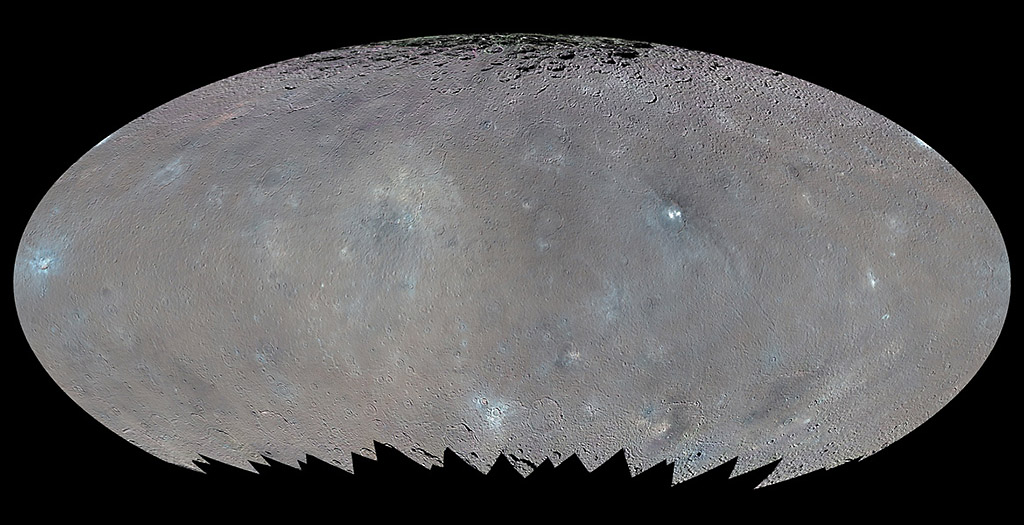This global map shows the surface of Ceres in enhanced color, encompassing infrared wavelengths beyond human visual range. (NASA/JPL-Caltech/UCLA/MPS/DLR/IDA)
Home This global map shows the surface of Ceres in enhanced color, encompassing infrared wavelengths beyond human visual range. (NASA/JPL-Caltech/UCLA/MPS/DLR/IDA) This global map shows the surface of Ceres in enhanced color, encompassing infrared wavelengths beyond human visual range. (NASA/JPL-Caltech/UCLA/MPS/DLR/IDA)




